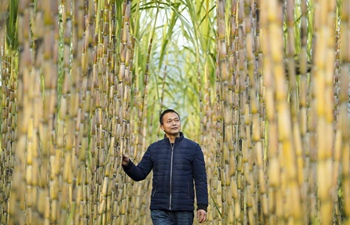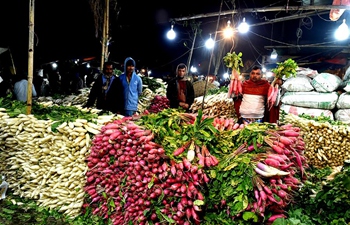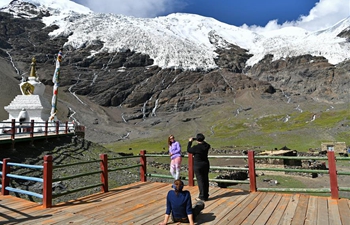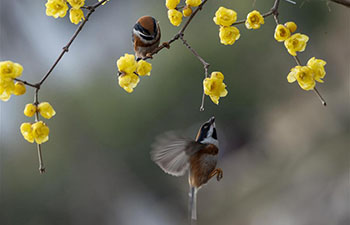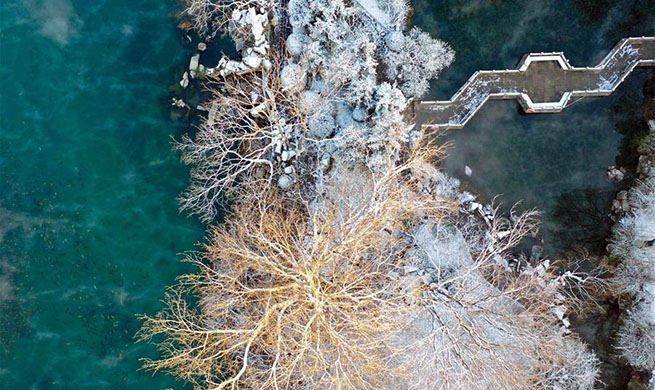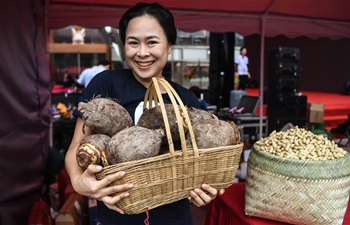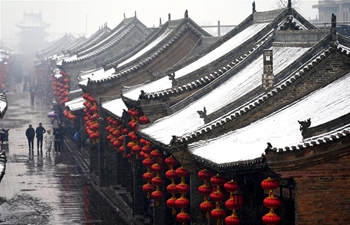NAIROBI, Jan. 8 (Xinhua) -- The sun was scorching hot on Monday as the about 30 cows and a shepherd strolled into an open field in Kitengela, a suburb south of Kenya's capital, Nairobi.
The field, from afar, appeared lush green following the recent heavy rains across the east African nation.
The greenness had attracted the animals and the herder from the Maasai community, the natives of Kitengela which is in the larger Kajiado County, a semi-arid region bordering the capital.
But the animals and the herder soon walked out of the field in frustrated as there was no grass in the field but a green obnoxious weed that has colonized the space and most of the other open lands in the vast dry region, killing pasture grass for the animals.
Over the years, the herders had no problem finding grass in the fields that still remain unoccupied amid rapid real estate development in the suburb.
But the recent heavy rains that hit Kenya due to climate change causing deaths and destruction have turned out to be a curse for the herders as they emboldened the weed that is turning out a curse.
The weed is causing a "green drought" in the pastoralist region, with the herders struggling to get grass for their cattle despite every space appearing lush green.
"We never used to struggle to get grass after it rains but this time around it seems the rains were of no benefit," said Bernard Sosoika, a herder.
Sosoika said he had to walk for long hours with his animals in search of little grass available yet the rain stopped barely three weeks ago.
"This weed is killing all the grass. The heavy rains seem to have broadcasted its seeds and made it pervasive," he said.
In the past, what would sprout out in the dryland mostly were shrubs and grass would grow beneath them.
Joseph ole Serea, a cattle-keeper in Isinya in the county said the weed has sprouted in most parts of the region.
"If you leave it on the farm it colonizes the entire field. It grows faster, produces white flowers and seeds which are dispersed by the winds and rains," he said, blaming the rains for the "green drought".
However, this is not the only invasive weed affecting the pastoralist region suffocating pasture. In 2018, herders grappled with a plant known as Ipomoea purpurea, which is poisonous to livestock.
The weed invaded over a million hectares of land in the vast country, according to the Kajiado County government.
The intensity of the weed declined with the weather changes, seemingly giving way to the current invasive species.
Parts of neighboring drylands like Machakos have also been invaded by the weed, with farmers noting that the invasive plant also kills food crops if not controlled.
Beatrice Macharia, an agronomist with Growth Point, an agro-consultancy, acknowledged that the effects of climate change are making some invasive plants more pervasive thanks to changing in temperatures and the rain pattern.
"Kajiado is among Kenyan drylands where temperatures have increased in the last few years. The warmer temperatures certainly affect some natural plant species and embolden others including such weeds," she said.
According to her, the plant has not only affected the pastoralists in the county but also crop farmers who now have to increase the frequency of their weeding to save their food crops.
"This weed has deeper roots unlike most horticultural crops which means that if it is left on the farm, it saps all the nutrients and moisture in the soil leaving the beneficial plant with nothing," she said.
Kenya's livestock sector contributes to about 42 percent of the agricultural gross domestic product, with production mainly done in arid and semi-arid lands.
